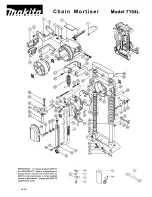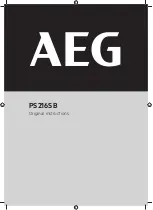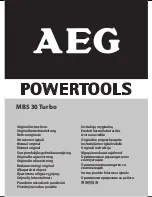
32
33
32
33
ADDITIONAL BLADE ADJUSTMENTS
(FIG. GG)
NOTE:
The adjusting mechanism is
located above the the blade elevation/
tilting handwheel under the table top.
If the front and rear measurements are
not the same:
If the blade is partial to right side:
1. Turn the left adjustment screw (1)
counterclockwise and adjust the
right side adjustment screw (2)
clockwise.
2. Remeasure, as described in steps 4
to 9 in the prior section.
3. When alignment is achieved, turn
the left adjustment screw (1) until it
touches the pivot rod (3).
If the blade is partial to left side:
1. Turn the right adjustment screw (2)
counterclockwise and adjust the
left side adjustment screw (1)
clockwise.
2. Remeasure, as described in steps 4
to 9 in the prior section.
3. When alignment is achieved, turn
the right adjustment screw (2) until
it touches the pivot rod (3).
Fig. GG
1
2
3
ALIGNING THE RIVING KNIFE
(FIG. HH)
●
To avoid injury from an accidental
start, make sure the switch is in
the OFF position and the plug
is disconnected from the power
source outlet.
● Never operate this tool without
the riving knife in the correct
position.
● Never operate this tool without
the blade guard in place for all
through sawing operations.
● This adjustment was made at the
factory, but it should be rechecked
and adjusted if necessary.
1. Remove the table insert and raise
the blade to the maximum height
by turning the blade elevation/tilting
handwheel clockwise.
2. Remove the blade guard and anti-
kickback pawls assembly.
3. Loosen the blade lock knob. Turn
and move the blade elevation/tilting
handwheel to 0° on the bevel
scale, and then tighten the blade
lock knob.
4. To see if the blade (1) and riving
knife (2) are correctly aligned, lay
a combination square (3) along the
side of the blade and against the
riving knife (making sure the square
is between the teeth of the blade).
5. Tilt the blade to the 45° position and
check the alignment again.
6. If the blade and riving knife are not
correctly aligned:
WARNING
!
















































